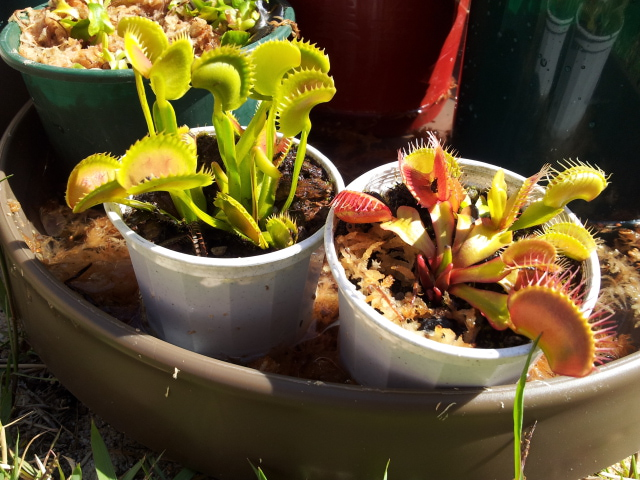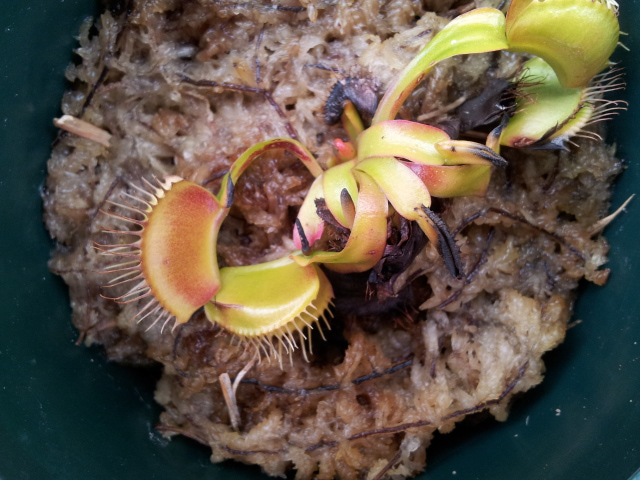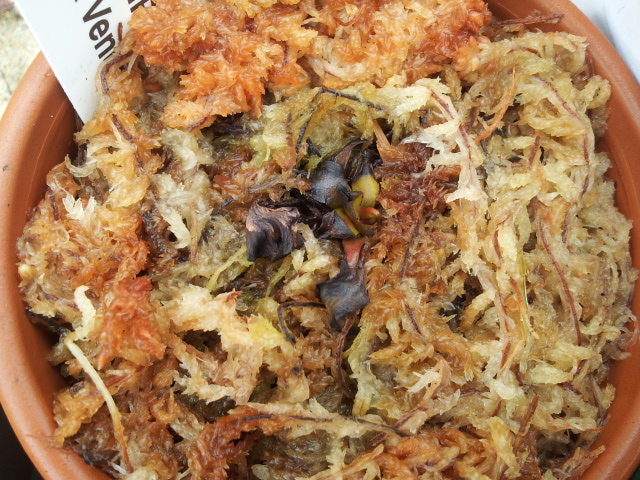Question venus fly traps
venus fly traps
QUESTION: Hi,
I have several sarracenia and venus fly traps growing outdoors in about 8+ more of direct sunlight here in Perth, Australia. The climate here gets quite hot in the summer months but it is currently late spring here.
The fly traps shown in the picture I had bought last season and had emerged from dormancy since early spring in Australia this year.
The problem is that occasionally, the new growth from the venus fly traps will turn soft and become black (the trap becomes black before it is fully formed, the leaf petiole however is still green and lasts for the whole season)
This is especially so for the plant on the right of the photo (shorter red traps).
I grow them in full sun and they are accustomed to full sun, watering them with distilled water and their potting mix is one part peat and sand from the carnivorous plant nursery (I will repot the plants next season).
Why does the new traps turn black? Is it because of the heat in the afternoon or from too much water? I keep them in 1cm water.
This problem happens to all my flytraps and I need some help!
Regards
Francis
ANSWER: Hi Francis,
Overall your Venus flytraps look stunning, and everything you're doing sounds just fine. Sometimes when flytraps are starting a new crown you can get oddly formed leaves like this. Also, it's possible you have have had a bug or something else damage a shoot a little while it was forming so that the trap didn't develop.
The only other thing I can recommend is to get the plants into larger pots. These look like the standard 3 inch pots (7.6cm?). Ideally I like them in 6 inch pots or even a little larger. Venus flytraps have surprisingly long roots, and always seems happier in larger pots. It also helps them to not dry out as easily.
Do you have any photos of plants with the trapless leaves grown out? It was hard to get a good look at the malformation.
Good Growing!
Jeff Dallas
Sarracenia Northwest
http://www.cobraplant.com
---------- FOLLOW-UP ----------
 new growth black
new growth black  pink venus flytrap
pink venus flytrap
QUESTION: Hi, thanks for the reply.
I've attached another photo showing the new growth turning black, its only the traps that turn black.
The pink venus flytrap is the one that is in problem the most by far, I got it a month ago and planted it but it just deteriorates with new growth turning soft and black and the old growth dying away. I inspected its rhizome and some parts of it indicate rotting with brown areas, the majority of the rhizome is firm but appears greenish. The roots are long and healthy, is this a case of rhizome rot? Does this mean that I had overwatered the plant?
Francis
AnswerHi Francis,
This could be from being too wet. Try switching to larger pots, and use a 50/50 mix of peat moss (not long-fiber sphagnum) to clean sand. Venus flytraps sometimes don't do well on long-fiber sphagnum since it can encourage fungal spores. Also, make sure your water is no more than 1/4 of the way up the pot. Flytraps like being moist, but not waterlogged. The conditions they grow in in North Carolina, USA is not unlike your Cephalotus habitats in your area. It's very sandy. Here's a link to some photos from Brunswick, County and some Venus flytraps in their natural habitat: http://jeffsnwphotos.shutterfly.com/pictures/11
Good Growing!
Jeff Dallas
Sarracenia Northwest
http://www.cobraplant.com








